Learn how a cooling tower operates
In this topic, we will see how a cooling tower works. This will cover the basic operation of the most common type of "wet" or "open" cooling tower that you will find on most commercial and industrial high rise sites.
Why are open cooling towers the most common?
Open or wet cooling towers are the most efficient way to reject heat from the cooling system because water evaporates to remove heat. This results in the loss of water from the cooling system and is therefore not suitable for all locations and system designs.
How do they work?
Consider the cooling tower at the top of a typical office building. A centrifugal pump moves water, called “condenser water,” between the chiller in the basement and the cooling tower on the roof. The chiller adds heat to the condenser water and the cooling tower cools it by venting it to the atmosphere. Heat rejection is all the unwanted heat from the building caused by people, computers, sunlight, lighting, etc. It must also reject the heat generated by the chiller compressor.
Condenser water leaves the chiller condenser at approximately 32°C (89.6°F) and is sent by the pump to the cooling tower. Le système a été conçu de sorte que l'eau du condenseur quittant la tour de refroidissement et rentrant dans le condenseur du refroidisseur doit être d'environ 27 °C (80.6 °F) afin de pouvoir capter suffisamment de chaleur lors du cycle Next.
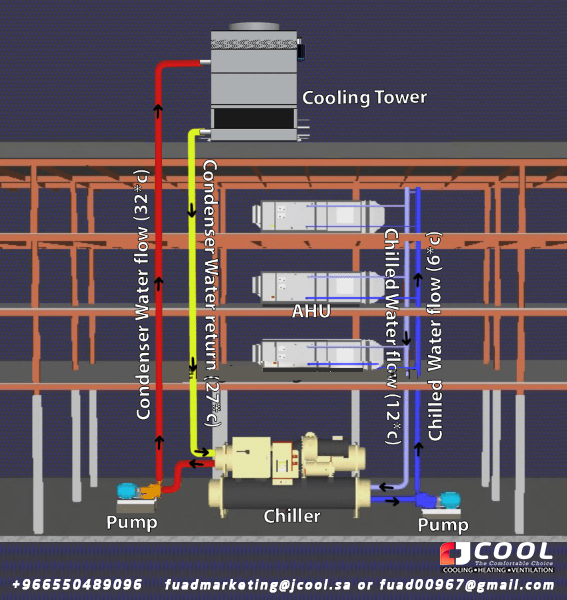 |
| how does a cooling tower work |
parts of a cooling tower
Before seeing how a cooling tower rejects heat. Let's first look at the parts inside a cooling tower.
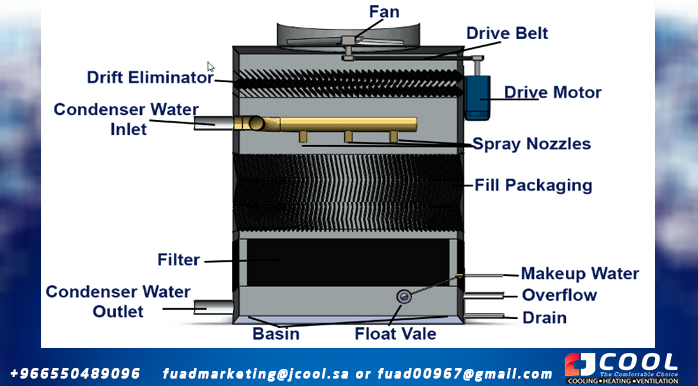 |
| parts of a cooling tower |
Fan:
Drive Belt and Drive Motor:
Drift Eliminator:
Condenser Water Inlet:
Spray Nozzles:
Fill Packaging:
Filter:
Condenser Water Outlet:
Makeup Water:
Overflow:
Drain:
How does a cooling tower reject heat?
Hot water from the condenser enters near the top of the cooling tower. It passes through nozzles that spray the water in small droplets onto the fill pack. The spray increases the surface area of the water allowing it to reject more heat.
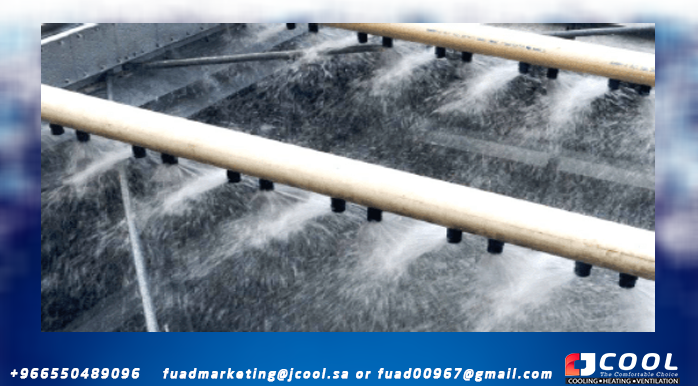 |
| Spray Nozzles for Cooling Towers |
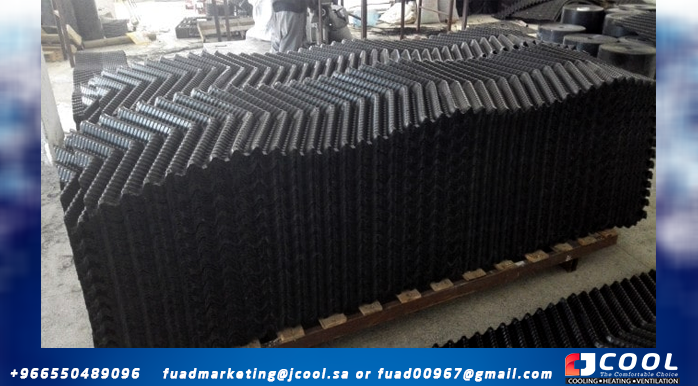 |
| Cooling Tower Fill Packing |
Water is sprayed into the filler pack
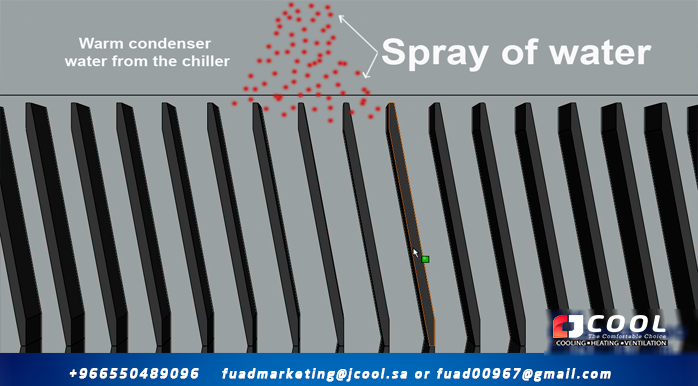 |
| water spray from the condenser to fill the packaging |
These droplets, coming from the spray, flow over the filling container, causing a thin film of water on its surface. The water will evaporate into the air and take the heat with it.
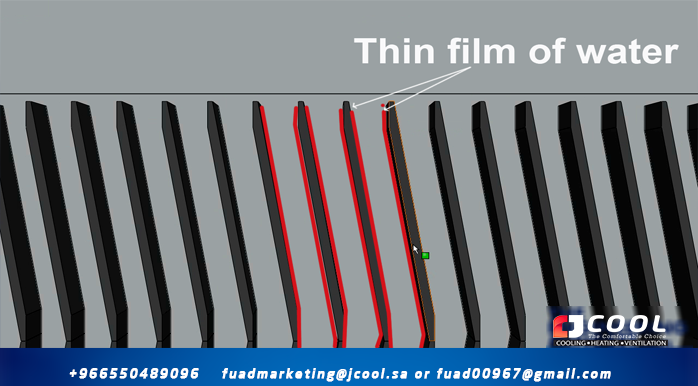 |
| Condenser Water Thin Film |
For increased cooling capacity, cooling towers use a fan to create more evaporation. The fan draws air through filters at the bottom of the unit and moves it up and out through the top of the cooling tower, past the fill pack and drip eliminators. The air flows in the opposite direction to that of the condenser water.
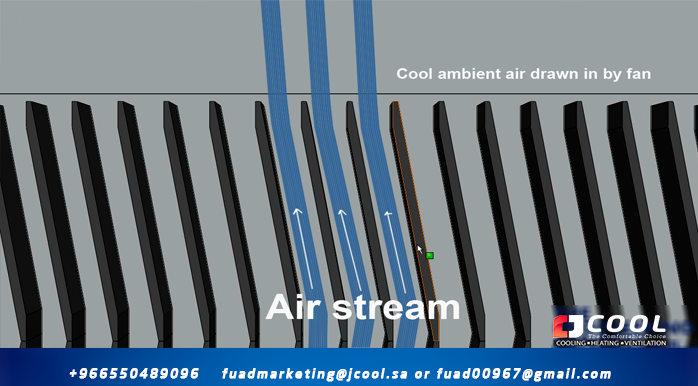 |
| Cooling tower air passes in front of the fill pack |
By combining the water jet, the thin film of water on the padding wrap and the flow of cold air, a great heat transfer is obtained.
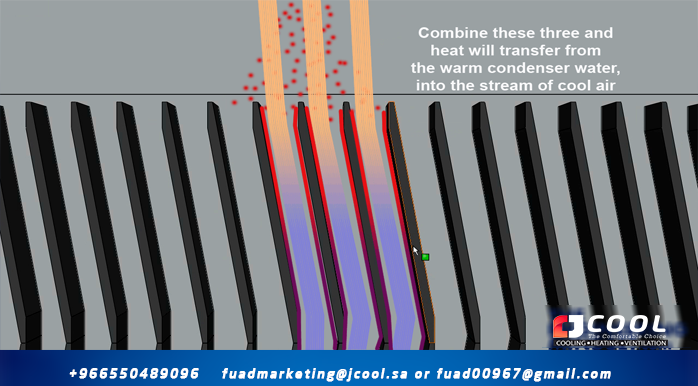 |
| Condenser air and water flow |
J
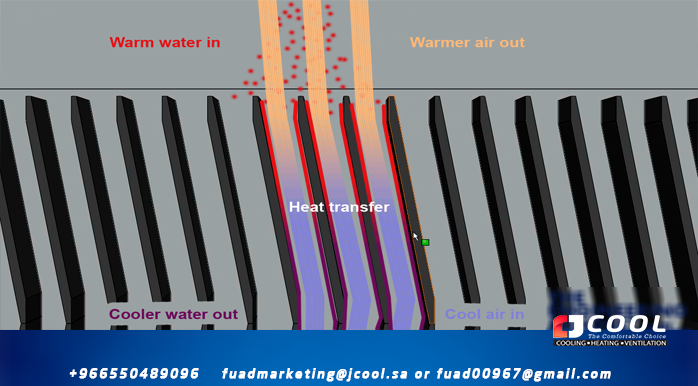 |
| cooling tower heat transfer |
Water costs money. Therefore, to reduce operating costs and water consumption, cooling towers often use drift eliminators. These are located above the fill pack and spray nozzles, but below the fan.
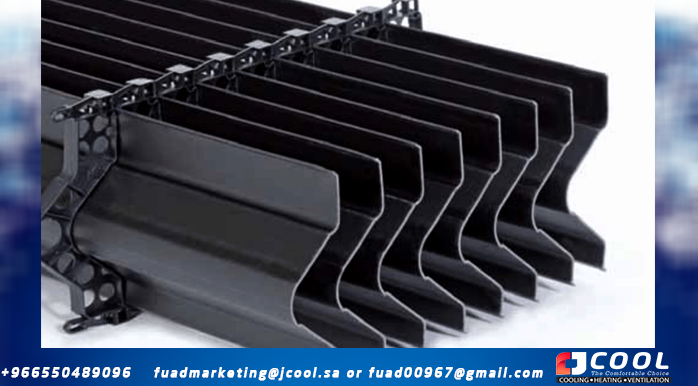 |
| Cooling Tower Drip Eliminators |
Mist eliminators deliberately change direction to cause outgoing air to condense against the walls. This removes some of the moisture from the air which then travels back to the fill pack for further cooling and ultimately collects in the cooling tower reservoir to return to the chiller.
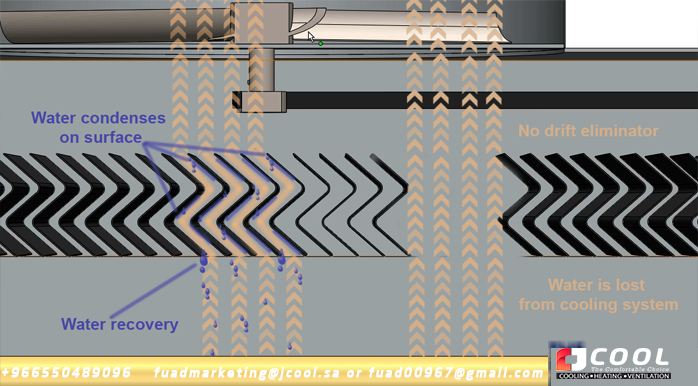 |
| Drip eliminator in a cooling tower |
The cooler water from the condenser collects in the tower reservoir. This returns to the cooler where it will pick up more heat and the cycle will start again. There is usually a strainer at the outlet to ensure no foreign objects get into the pipe as this will get into the pump vanes.
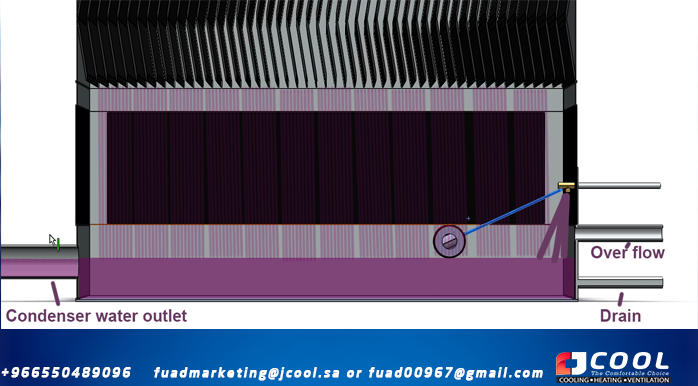 |
| cooling tower basin |
A float valve in the reservoir controls the flow of water from the make-up water inlet and ensures that a minimum water level is maintained. This water is recharged by evaporative losses and also during blowdowns.
The overflow prevents too much condenser water from entering the cooling tower reservoir. The water that enters here will usually be sent to the sewer.
The drain is usually equipped with an automatic valve. Sensors in the pipes of the condenser or tank system will detect the level of impurities (dirt and salts) and will start to drain the water if the level is too high. This drain is known as a "bleed" and causes the float valve to go down, allowing fresh water to enter through the make-up inlet. The impurities are already in the condenser water and in the air, but when the water evaporates, it leaves them behind. If enough water evaporates, impurities will accumulate that can damage equipment and reduce the efficiency and effectiveness of the cooling tower, chiller, and pump.
In colder climates, some cooling tower sinks will be equipped with an electric plate warmer. It turns on at a specified minimum air temperature (eg, 41°F, 5°C) to prevent freezing.
Watch the video tutorials below to learn more.
Do you need help maintaining
and repairing an air conditioner?
It's hard to keep cool when the air conditioning
isn't working. Whether it's repairs, air conditioning,
regular maintenance, or assistance with choosing
your new unit, JCOOL professionals can keep
you comfortable all year
Jamjoom Cooling Systems Factory (JCOOL)
products (condenser coil - evaporator coil -
heat exchanger- air conditioning -
cold evaporator - cooler -industrial air cooler
- tube bundle - air heat exchanger)
Make a reservation immediately with the
maintenance teambefore the summer heat
intensifies.
Let us help you with a lot of maintenance
and installation work on your next project.
To request the service: -
Jamjoom Cooling Systems Factory
Jeddah - Second Industrial City - Street 49
fuadmarketing@jamjoomarcool.com
fuadmarketing@jcool.sa
Fuad00967@gmail.com
Eng/ Abu Hussam
#heatExchangers #condensers #evaporators
#coolers #coils #airDucts #chiller's #jcool
#Saudi_industry #cooling #ventilation
#radiators #jcool #jamjoomCoil #jamjoom_cooling_systems_factory
#jamjoom #saudiArabai #coolingtowers #cooling_tower #coolingcoils
#heat_exchanger #heatexchanger #coolingsystems #cooling #chiller
#hvac #jamjoom_hvac #jamjoom_cooling #global_cooling_tower
#Brand_Saudi_Arabia #made_in_Saudi_Arabia #🇸🇦
- TAGS
- #ahu #
- blowdown
- #building_services
- #chiller
- #condenser_water
- #Cooling_Tower
- #drain
- #engineering
- #HVAC
- #overflow #jcool #jamjoomCoil #jamjoom_cooling_systems_factory



Comments
Post a Comment